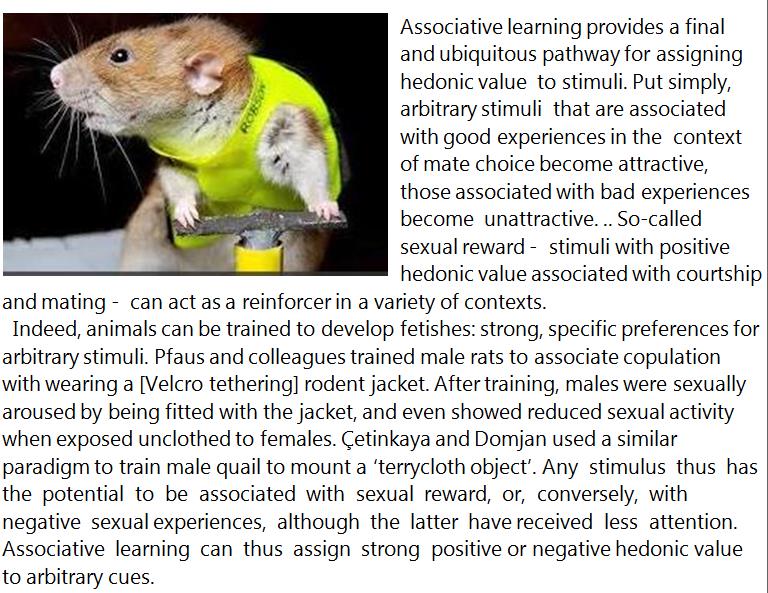Current Zoology, zoy054, https://doi.org/10.1093/cz/zoy054
Published: 04 July 2018
Abstract
Mating preferences can show extreme variation within and among individuals even when sensory inputs are conserved. This variation is a result of changes associated with evaluative mechanisms that assign positive, neutral, or negative hedonic value to stimuli – that is, label them as attractive, uninteresting, or unattractive. There is widespread behavioral evidence for differences in genes, environmental cues, or social experience leading to marked changes in the hedonic value of stimuli. Evaluation is accomplished through an array of mechanisms that are readily modifiable through genetic changes or environmental inputs, and that may often result in the rapid acquisition or loss of behavioral preferences. Reversals in preference arising from “flips” in hedonic value may be quite common. Incorporating such discontinuous changes into models of preference evolution may illuminate our understanding of processes like trait diversification, sexual conflict, and sympatric speciation.
RELEVANT EXCERPTS:
Experience-dependent reversals in hedonic value
Choosers across vertebrate and invertebrate taxa show preferences that can be markedly modified by experience. These experiences range from lifetime effects on early development to short-term effects during the course of courtship interactions. In some cases, the effects of experience can be directly linked to sensory modification, for example the differential regulation of odorant receptors in response to olfactory exposure (Nevitt et al. 1994). In many more, such an increase in peripheral sensitivity to a familiar stimulus cannot be ruled out. Nevertheless, there are perhaps even more cases where we can be confident that an experience-dependent preference involves a change in hedonic value against the background of a conserved sensory response. This is the case for sexual imprinting in zebra finches, where individuals develop preferences for stimuli found in the opposite-sex parent and antipathies for those found in the samesex parent (ten Cate et al. 2006). In a variety of species, exposure to danger, like predator cues, causes choosers to lose or reverse their preferences for ornaments providing greater sensory stimulation (Berglund 1993; Pilakouta and Alonzo 2014). A similar effect occurs in mate copying, where females prefer a previously unattractive male when he is paired with proceptive cues from another female (Mery et al. 2009; Santos et al. 2014; Vakirtzis 2011). Choosers often modify their preferences with age in ways unlikely to arise from sensory changes. For example, female satin bowerbirds are startled by high-intensity courtship displays when young, but prefer vigorously courting males when older: the more conspicuous stimulus flips from aversive to attractive presumably as a consequence of females learning to distinguish courtship from threatening stimuli (Coleman et al. 2004).
Associative learning
Associative learning provides a final and ubiquitous pathway for assigning hedonic value to stimuli. Put simply, arbitrary stimuli that are associated with good experiences in the context of mate choice become attractive, those associated with bad experiences become unattractive. For example, Coria-Avila and colleagues (2005) found that females learned to prefer an arbitrary odor applied to male rats in the context of “paced copulation”, where females could control mating rate, but not in an “unpaced” context where females had to fend off mating attempts. So-called sexual reward – stimuli with positive hedonic value associated with courtship and mating – can act as a reinforcer in a variety of contexts. Indeed, animals can be trained to develop fetishes: strong, specific preferences for arbitrary stimuli. Pfaus and colleagues (2012) trained male rats to associate copulation with wearing a rodent jacket. After training, males were sexually aroused by being fitted with the jacket, and even showed reduced sexual activity when exposed unclothed to females. Çetinkaya and Domjan (2006) used a similar paradigm to train male quail to mount a ‘terrycloth object’. Any stimulus thus has the potential to be associated with sexual reward, or, conversely, with negative sexual experiences, although the latter have received less attention. Associative learning can thus assign strong positive or negative hedonic value to arbitrary cues.
